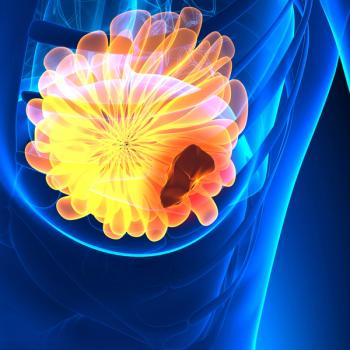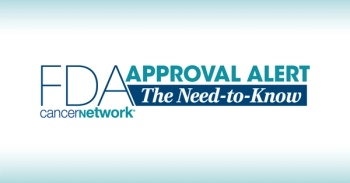
Oncology NEWS International
- Oncology NEWS International Vol 11 No 5
- Volume 11
- Issue 5
Exercise Is an Important Ingredient in Ameliorating Anemia-Related Fatigue
LITTLE ROCK-For patients with cancer-related fatigue, "the first line of treatment, in my opinion, is to increase their hemoglobin levels so that they can begin an exercise program," noted William Evans, PhD. "Cancer patients suffering from primary fatigue should not be advised to increase the amount of daily rest. Rather, they should be counseled to carry out aerobic exercise," he explained. Dr. Evans serves as director, nutrition, metabolism, and exercise, and professor of geriatrics, physiology, and nutrition at the University of Arkansas for Medical Sciences in Little Rock.
LITTLE ROCKFor patients with cancer-related fatigue, "the first line of treatment, in my opinion, is to increase their hemoglobin levels so that they can begin an exercise program," noted William Evans, PhD. "Cancer patients suffering from primary fatigue should not be advised to increase the amount of daily rest. Rather, they should be counseled to carry out aerobic exercise," he explained. Dr. Evans serves as director, nutrition, metabolism, and exercise, and professor of geriatrics, physiology, and nutrition at the University of Arkansas for Medical Sciences in Little Rock.
An exercise physiologist by training, Dr. Evans noted that fatigue is related to reduced aerobic capacity, which can be measured by VO2max (cardiac output times the arterial/venous oxygen difference). VO2max varies enormously, with values ranging from 60 mL/kg/min. and up for professional athletes, to 50 and below for sedentary individuals. In cancer patients, VO2max levels have been measured below 20 mL/kg/min.
Benefits of rHuEPO
Dr. Evans reviewed one randomized prospective study examining the protective effects of recombinant erythropoietin (rHuEPO) on metabolic and exercise capacity in cancer patients losing weight. The study involved 108 cancer patients, most with gastrointestinal cancers, randomized to oral indomethacin alone or with rHuEPO.
Despite being "somewhat complicated by a huge drop-out rate," the results clearly showed that hemoglobin levels and exercise capacity continued to drop in patients who did not receive rHuEPO, while patients who received it maintained relatively high hemoglobin levels of about 13 g/dL and increased their exercise capacity (see Figure 1). "The conclusion was that anemia is effectively overcome by rHuEPO in unselected cancer patients. Treatment of anemia preserved physical function, defined as exercise power and whole body metabolic efficiency," Dr. Evans said. "There is a remarkably strong relationship between change in VO
2
max and change in hemoglobin," he continued, "and at submaximal exercise capacities, restoring hemoglobin levels results in increased cardiac output and a change in heart rate and lactate."
Cancer fatigue is probably due not only to anemia, but also to loss of muscle mass resulting from cachexia, and severe deconditioning, Dr. Evans said. "Many cancer patients who become anemic and lose muscle mass are likely to be very inactive. Increasing their hematocrit may allow cancer patients to participate in a regular conditioning program to resolve this issue of severe deconditioning."
Reviewing the somewhat sparse literature on the subject, Dr. Evans found that cancer patients losing weight or suffering from severe fatigue had greatly reduced VO2max, equivalent only to the oxygen cost of simply walking at a normal pace of about 2½ miles per hour. "Most of the activities of daily living are well above the so-called anaerobic threshold of most cancer patients," Dr. Evans said. "That tells us two things: that their fatigue is related to their anemia and low VO2max, but also their severe deconditioning." The anaerobic threshold is the point when muscles begin producing more lactic acid than they consume and spill lactic acid into the blood, increasing respiration rate. Above the threshold it is extremely difficult to work without becoming fatigued.
Effects of Conditioning
One of the few studies looking at physical training for cancer patients, involved five cancer patients with chemotherapy-related fatigue. Rather than receiving rHuEPO, the patients were simply trained on a treadmill at a speed corresponding to their anaerobic threshold. As the patients’ lactate levels and heart rates decreased, the treadmill speed and duration of exercise increased to about 35 minutes 5 days per week.
The researchers concluded that "the loss of energy originated in extreme muscular deconditioning related to illness and treatment and the recommendations for rest had worked paradoxically. That is, most of these patients had been told by their oncologist that if they were tired they should go home and take a nap," Dr. Evans said. "In fact, that’s probably the worst recommendation that they could be given because inactivity induces muscle catabolism and prolonged rest can cause a further loss of performance."
Exercise training in cancer patients "can cause an almost immediate plasma volume expansion and increase in cardiac output, improve anaerobic threshold, and increase the VO2max," he explained. "This will improve activities of daily living and cause a significant increase in skeletal muscle metabolism with increases in capillary density."
Strength Training Possible
A small study published in the Journal of the American Medical Association 10 years ago showed the benefits of intensive weight training among 10 very old and frail nursing home patients. "We were able to triple muscle strength after 8 weeks of training and we caused a 10% increase in their muscle mass," Dr. Evans reported.
A follow-up study in the same nursing home tested the effects of exercise and nutritional supplements among 100 frail and elderly patients. The supplements were not successful in getting elderly persons to increase their food intake. "The only group, in fact, that increased their food intake was the group that exercised," Dr. Evans reported. Total food intake was strongly related to increase in muscle size. "Importantly, the subjects who exercised had decreased depressive symptoms so that it really had a quite remarkable effect," he added.
"Oncologists and physicians resist the concept that exercise may be appropriate for their patients, either because they’re too frail or they’re not going to like it, or they’re not going to be able to do it, and I can tell you if these people [frail elderly patients] can do it, virtually anybody can do it."
Articles in this issue
over 23 years ago
Prognosis Good for Local Recurrence After Lumpectomyover 23 years ago
Long-Term Use of Actiq Safe and Effective for Breakthrough Painover 23 years ago
Youth Exposed to Tobacco Promotionsover 23 years ago
Green Tea May Help Prevent Certain Gastrointestinal Cancersover 23 years ago
EGFR Inhibitor Effective as Salvage Therapy for NSCLCover 23 years ago
Targeted Filgrastim Support Allows Planned Chemotherapy Dosesover 23 years ago
Low Risk of CHF With Paclitaxel/Trastuzumab Adjuvant Rxover 23 years ago
Anxiety, Depression in Women at High Risk for Breast Cancerover 23 years ago
NCCN Updates its Treatment Guidelines for Breast Cancerover 23 years ago
Danny Glover ‘Acting’ as Spokesman for Anemia LifeLineNewsletter
Stay up to date on recent advances in the multidisciplinary approach to cancer.





















































































